Agreement for the application of safeguards and Additional Protocol
The Republic of Serbia and the International Atomic Energy Agency concluded the Agreement for the Application of Safeguards in Connection with the Treaty on the Non-Proliferation of Nuclear Weapons that entered into force on 28 December 1973 (concluded with the Socialist Federal Republic of Yugoslavia and continues to be applied for Serbia to the extent relevant to the territory of Serbia).
The application of safeguards is based on the assessment of the accuracy and entirety of the nuclear material declared by the Republic of Serbia, as well as the nuclear activities. The verification measures include site inspection (which can be ad hoc, regular and special), visits and continuous monitoring and evaluation. In essence, there are two groups of measures carried out depending on the scope of the Agreement for the Application of Safeguards being in force:
- The first group relating to the verification of the state reports on the declared nuclear material and nuclear activities. These measures primarily refer to the accounting of the nuclear material, supplemented by deterrence and surveillance techniques, such as sealing and IAEA CCTV mounting in nuclear facilities.
- The second group contains additional measures serving to strengthen the IAEA inspection competence, incorporated within the Additional Protocol. The Additional Protocol is a legally binding document that authorises the IAEA not only to verify the site-controlled declared nuclear material, but also guarantee nonexistence of undeclared nuclear material and nuclear activities within the state. The Protocol broadens the IAEA’s access to the information and websites.
The Additional Protocol to the Safeguards Agreements between the Republic of Serbia and the IAEA was concluded on 3 July 2009, which underlined the readiness of our country to support the international efforts to control non-proliferation of nuclear weapons.
The ratification of the Protocol implies the approval of an extremely complex and comprehensive process that primarily requires adequately educated and well-trained staff, as well as adequate financial resources. Our country is currently in the process of preparing for the ratification.
The overview of specific measures that enter into force following the ratification of the Additional Protocol are as follows:
- Provision of information by the state, and access to the IAEA’a inspectors to the entire nuclear fuel cycle-related activities, including uranium mines, fuel fabrication, fuel enrichment facilities, nuclear waste sites, as well as any other sites where nuclear material is or can be present.
- Provision of information by the state and the access to to the IAEA inspectors on short notice to all facilities on the site. The additional Protocol enables the IAEA inspectors to gain complementary access so as to ensure there is no undeclared nuclear material, or to solve the issues of inconsistency in the information that the state submits on its nuclear activities. The inspection is mostly announced 24 hours in advance. However this can be shorter – at least 2 hours in advance – in case of access to any location on the site deemd as required to verify the information on the facility design, or in case of ad hoc or routine inspections on the site. The activities within such inspection can include visual observation; collection of environmental samples; utilization of radiation detection and measurement devices; application of seals and other tamper-indicating devices.
- Collection of environmental samples by the IAEA in locations other than the declared ones when the IAEA finds it necessary. (Wide-area environmental sampling would require an approval by the IAEA’s Board of Governors and the consultation with the relevant state).
- The IAEA’s right to make use of internationally established systems of direct communications, including satellite systems and other forms of telecommunication.
- The instance of accepting the designated IAEA inspectors by the state and issuance of multiple entry/exit and/or transit visas, where required, (valid for at least one year) for the inspectors.
- Provision of information by the state and the IAEA’s verification mechanism relating to nuclear fuel cycle-related research and development activities.
Provision of information by the state on the fabrication and export of sensitive nuclear technologies, and the IAEA’s verification mechanisms for the fabrication and import locations in the state.
You can download the brochure on the Additional Protocol here: Additional Protocol – brochure
You can find the internet presentation Additional Protocol Implementation in the Republic of Serbia here: www.dp.gov.rs.
